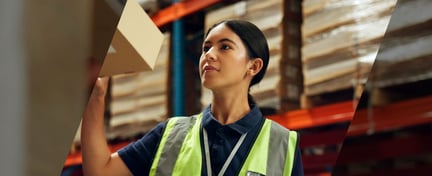Carbon neutrality is now a key pillar of corporate sustainability, driven by regulation, investor pressure and rising consumer expectations. But as expectations rise, so too does the need for credibility.
From packaging to annual reports, businesses across sectors are publicly committing to climate goals. However, the trust placed in these claims is eroding. According to BEUC, 69% of Europeans feel uninformed about green claims and when the role of offsetting is explained, many feel misled.
At the same time, regulators are stepping in. In the EU, claims such as “climate neutral” will be banned by 2026 unless they are backed by robust evidence of emissions reduction. Similar action is underway in the UK, United States and Australia, signalling a global shift towards higher standards of environmental disclosure.
“This is not just about regulatory compliance,” explains Olga Rivas, Technical Cluster Manager and ESG expert at LRQA. “It is about integrity. Offsetting has a role, but it should never be the headline. Stakeholders want to see what you’ve actually reduced before anything else.”
Companies are moving away from strategies that rely heavily on offsetting and are focusing more on reducing emissions and adopting circular practices. But the big question remains: how can you talk about carbon neutrality in a way that’s both honest and effective?
“This isn’t just about following the rules,” says Olga Rivas, ESG expert at LRQA. “It’s about being honest. Offsetting can help, but it shouldn’t be the main message. People want to see what you’ve actually reduced.”
Carbon neutrality in context: What it means and what it doesn’t
A credible carbon neutrality claim starts with a clear definition. Frameworks like PAS 2060, soon to be replaced by ISO 14068, provide structured pathways for businesses to quantify emissions, reduce them and use high-quality offsets only for the residual impact. These frameworks also require transparent public disclosure and ideally, third-party validation.
However, many claims fall short. Offsetting is frequently treated as a primary solution, rather than a final step in a broader reduction strategy. This creates confusion and feeds consumer scepticism.
“Offsetting has a role, but it should never be the headline,” says Olga. “Stakeholders want to know what you have actually reduced, not just what you have paid to balance out. That context is especially important in high-emissions and consumer-facing sectors.”
Clarity on scope, timeframes and reduction methods is essential. Without it, even well-intentioned claims can appear misleading.
Why circular thinking matters
Carbon neutrality is not a standalone outcome. It sits within a much larger system and that system must become circular.
Circular economy principles, such as designing out waste, extending product life and regenerating materials, directly contribute to emission reductions. By changing the way resources are used across the value chain, organisations can prevent emissions before they happen.
“Carbon integrity is not just about numbers,” Olga explains. “It is about how your whole systems work. Circularity helps reduce emissions upstream and downstream, making your neutrality claim more credible and more durable.”
Organisations that embed circular thinking into their neutrality strategy are not only reducing reliance on offsets. They are building more resilient business models that align with future regulatory and stakeholder expectations.
What credible communication looks like in 2025
In today’s market, credibility requires more than a label. A responsible carbon neutrality claim should:
- Define clear boundaries: Which emissions scopes, sites or operations are covered? Over what period?
- Explain methods transparently: What calculation frameworks were used? How were reductions achieved?
- Acknowledge progress: Avoid absolutes. Focus on transparency, including limitations and next steps.
- Use precise language: Terms like “carbon neutral” must be qualified. Avoid statements that imply complete elimination of impact unless they can be substantiated.
- Tell a bigger story: Show how neutrality links to lifecycle emissions, supplier engagement or circular design.
“Your claim should reflect the complexity of your journey,” says Olga. “We’re seeing a shift from slogans to substance. Stakeholders want evidence, not just ambition.”
Organisations with Science-Based Targets and credible verification behind their claims are better positioned to meet rising expectations from consumers, regulators and investors. Poorly communicated claims not only risk regulatory attention but also create confusion internally, limiting buy-in across the business. In contrast, a clear, verified narrative can drive internal alignment and stakeholder confidence, enabling sustainability leaders to act with greater authority.
Enabling credibility through independent ESG assurance
Independent ESG assurance strengthens trust in carbon neutrality claims. It provides a layer of objectivity and accountability, helping organisations demonstrate alignment with internationally recognised standards. We support organisations through:
- Verification of emissions data and reduction claims in line with ISO 14064-1 and the GHG Protocol
- Preparation for carbon neutrality certification under ISO 14068
- Scope 3 readiness assessments and advisory support for circularity-aligned reporting
“These services are not about ticking a box,” Olga explains. “They are about improving the quality of data and decisions. Verification helps organisations understand their impact, identify opportunities and build trust with stakeholders.”
From claims to long-term credibility
Carbon neutrality should not be seen as an endpoint. It is one milestone on the path to a circular, low-carbon future.
Rather than aim for perfection, organisations should aim for progress. They should communicate what has been achieved, what remains to be done and how they are continuing to improve.
As Olga concludes: “The most credible carbon neutrality story is the one that keeps evolving. It is built on reduction, shaped by circularity and supported by verification. That is how you move from climate claims to climate credibility.”
In the years ahead, carbon neutrality may become less of a brand differentiator and more of a baseline. What will set leaders apart is how openly and intelligently they integrate it into broader decarbonisation and circularity efforts.
Build trust with every claim.
Discover how LRQA can help you verify your carbon neutrality strategy and align it with international expectations. Find out more or speak to an expert today.










